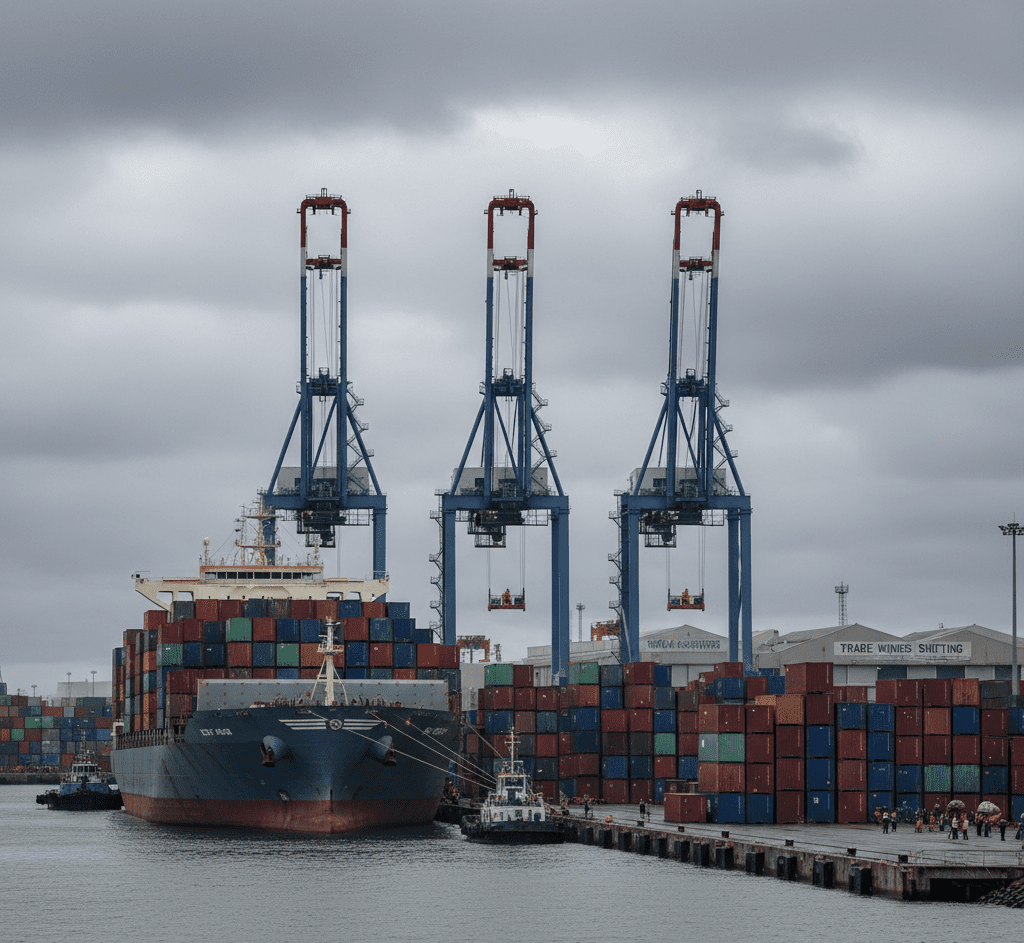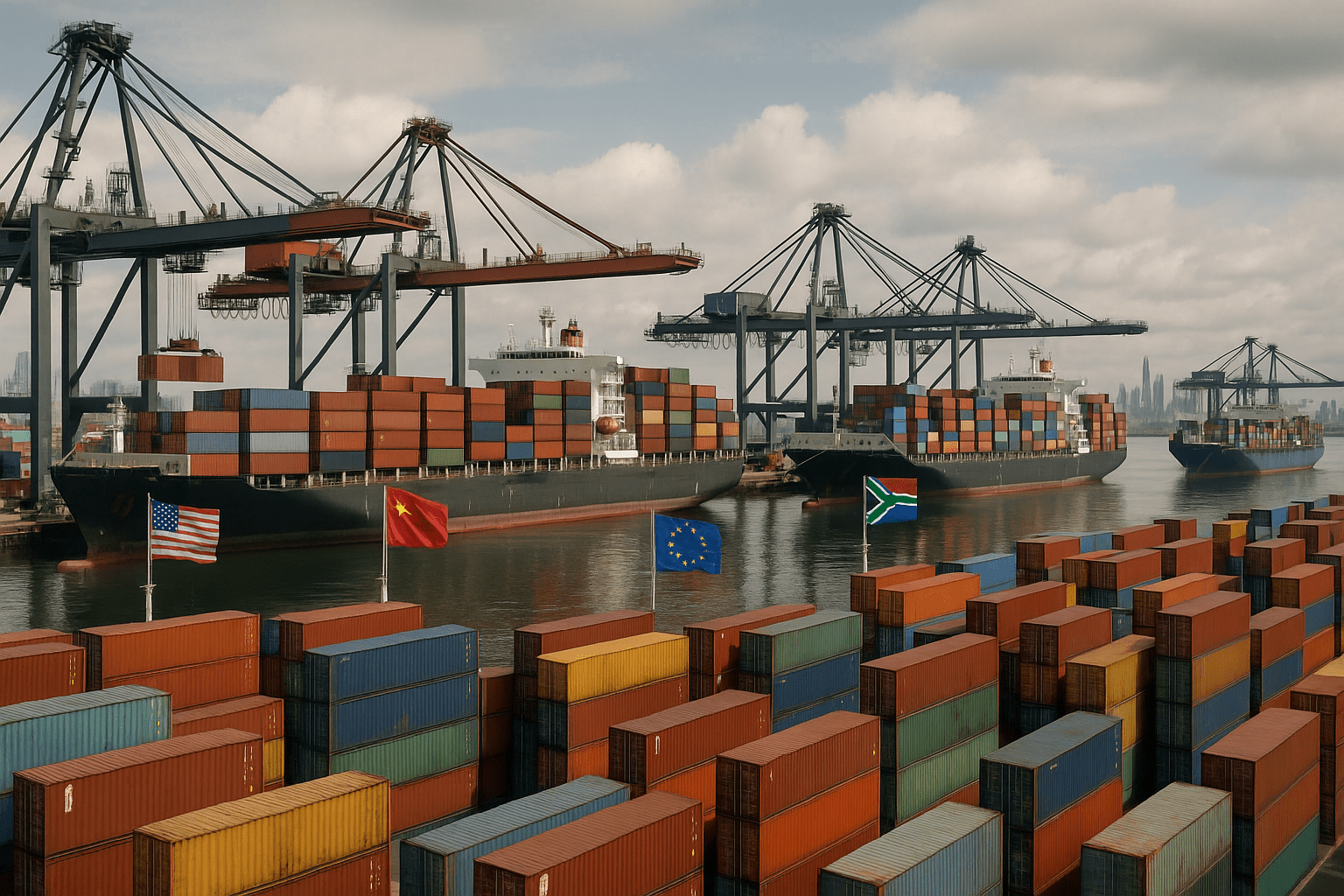Business Confidence Falls Again — Tariffs and Trade Uncertainty Chill Global Investment

Business Confidence Falls Again — Tariffs and Trade Uncertainty Chill Global Investment
Global business sentiment has taken another hit as trade tensions and tariff uncertainty weigh heavily on investment and supply-chain decisions. According to Dun & Bradstreet’s latest Global Business Optimism Insights Q3 2025 report, business optimism fell for the third consecutive quarter, confirming what many executives already feel — confidence is in retreat.
A Sharp Drop in Business Optimism
The numbers paint a clear picture of mounting unease. Dun & Bradstreet (D&B) reports that its Global Business Optimism Index dropped 6.5% quarter-on-quarter in Q3 2025 — marking the third straight decline. The Global Business Investment Confidence Index also slumped 13.1%, the steepest contraction this year.
This downward trajectory mirrors a broader sentiment that the global economy is entering a period of cautious spending and delayed investment decisions. Executives surveyed by D&B cited “tariff uncertainty, softening trade, and slower sales” as the main drivers behind the pessimism.
Even more concerning is the Global Business Supply Chain Continuity Index, which dropped 9.7% in Q3 and 18.6% year-to-date. This suggests businesses are not only less confident about their investments but also increasingly worried about the reliability of their supply chains.
Tariff and Trade Policy Uncertainty: The Main Culprit
While inflation and high borrowing costs have been pressing issues globally, trade and tariff uncertainty remain the silent killers of business confidence.
The D&B report links much of the decline directly to shifting trade policies. Businesses face unpredictable tariff changes, political trade spats, and logistical disruptions — all of which make it difficult to plan ahead. In a world that relies on cross-border manufacturing and global sourcing, this unpredictability is toxic.
An Investopedia analysis of U.S. manufacturing trends echoes the concern, noting that tariffs have “wreaked havoc on planning and scheduling” across sectors like electronics and metal fabrication. Even the U.S. Federal Reserve’s Beige Book has highlighted that “uncertainty around international trade policy was pervasive,” with firms delaying expansion due to unclear policy direction.
Goldman Sachs estimates that such trade-policy uncertainty could shave 0.2 to 0.3 percentage points off global GDP growth — a small but meaningful drag when economies are already under pressure.
Manufacturing and Metals: The Hardest Hit
Some industries are clearly bearing the brunt. Dun & Bradstreet’s data reveals that manufacturing sectors saw the steepest declines in optimism and supply-chain continuity in 2025.
- The manufacturing sector’s supply-chain index fell 13.6% quarter-on-quarter, compared with 7.5% for services.
- Within manufacturing, metals, automotives, and capital goods were the most affected — with confidence levels plunging between 9% and 13%.
- D&B’s survey of over 10,000 executives worldwide found that these sectors are facing cost volatility, logistics disruptions, and rising input tariffs that threaten profit margins.
These industries are particularly vulnerable because they depend on cross-border supply chains and imported inputs. When tariffs change suddenly or trade routes are disrupted, the entire production network feels the shock.
Investment Confidence Wanes
The steep fall in D&B’s Investment Confidence Index is perhaps the most worrying sign. Investment spending is the lifeblood of long-term economic growth, driving job creation, productivity gains, and innovation.
But with uncertainty dominating the global trade environment, companies are pulling back. D&B’s survey found that many firms are postponing capital expenditure, delaying hiring, and scaling down expansion plans. Executives cited “geopolitical tension” and “tariff policy unpredictability” as their top risks for 2025 and 2026.
A companion study by Treasury Management International confirms the pattern, noting that 34% of businesses now view domestic market expansion as their safest growth option — a defensive move that underlines their lack of confidence in cross-border operations.
Supply Chain Disruptions Trigger Strategy Shifts
The persistent supply-chain disruptions of the past few years — from COVID-19 to the Suez Canal blockage to tariff disputes — have fundamentally changed how businesses think about sourcing.
Dun & Bradstreet’s 2025 survey indicates a global pivot toward “supply-chain resilience strategies”. These include:
- Near-shoring production to more politically stable regions.
- Diversifying suppliers to reduce dependency on single countries.
- Investing in digital supply-chain management tools for real-time risk monitoring.
However, these adjustments come at a cost. Shortening supply chains or moving production closer to home often means higher labour and operational expenses, especially for manufacturers accustomed to cheaper overseas inputs.
Global Ripple Effects: What This Means for Emerging Markets
For emerging economies — including South Africa — the implications are significant. Many local manufacturers and exporters depend on stable trade relationships with the U.S., EU, and Asia. When global confidence falters, export orders shrink, and foreign direct investment tends to slow down.
South African exporters of automotive components, machinery, and metal goods could feel the impact most acutely. A global pullback in investment may also mean reduced demand for raw materials like iron ore and platinum, which underpin a large share of South Africa’s export earnings.
In short: when global manufacturers hesitate, resource-based economies like South Africa often feel the aftershocks first.
Policy and Business Takeaways
For policymakers, the message is clear: predictability breeds confidence. Businesses need stability in tariff and trade frameworks to commit to long-term investments. Policymakers should aim for transparent, multi-year trade policies and reduce the frequency of abrupt tariff shifts.
For companies, the focus should be on:
- Scenario planning for tariff and policy risks.
- Diversifying supplier networks to avoid concentration exposure.
- Leveraging digital tools for supply-chain visibility and predictive analytics.
- Reassessing capital expenditure timing, prioritising agility and resilience over rapid expansion.
Firms that adapt early — by digitising their supply chains and building flexible sourcing models — are likely to emerge stronger from this era of volatility.
The world’s businesses are clearly uneasy. After three consecutive quarters of declining optimism, the message from executives is consistent: trade uncertainty and tariffs are undermining confidence. Manufacturing, metals, and automotive firms — the backbone of global trade — are struggling to plan ahead, while investment and expansion plans are being shelved.
Until tariff policies stabilise and trade rules become more predictable, business sentiment is likely to remain subdued. For now, global firms seem more inclined to hunker down than to charge ahead.



